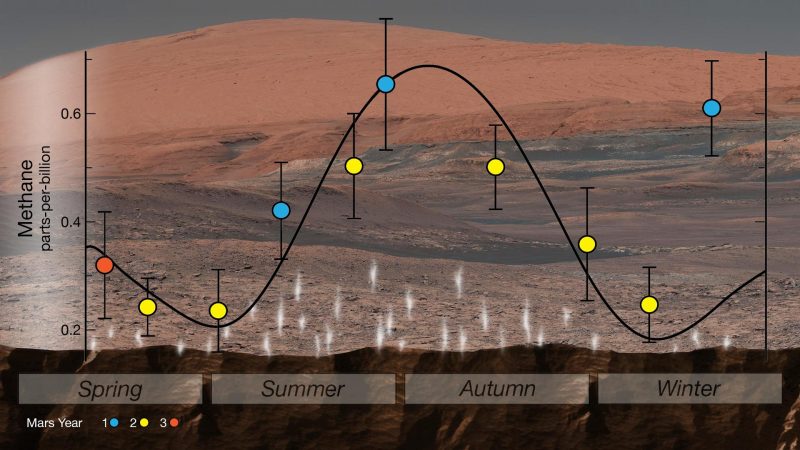
Life On Mars? Mars Rover Curiosity Detects Unusually High Methane Levels
Earlier this week, Curiosity, the Mars Rover, found the largest amount of methane on the Red Planet throughout its mission. The rover found around 21 parts per billion units by volume.
The results of the analysis came after the tunable laser spectrometer of the Mars Rover detected methane levels on its surface.
So why is this exciting?
Well, on earth, methane is really important for microbial life, but the discovery can also mean that it was created through the interactions of rocks and water.
Unfortunately, Curiosity does not have the instruments if the source of the methane is biology or geology.
Paul Mahaffy of NASA’s Goddard Spaceflight Center in Greenbelt, Maryland said, “With our current measurements, we have no way of telling if the methane source is biology or geology, or even ancient or modern.”
The team that handles Curiosity said that they have detected Methane on the surface of the plane on a number of occasions throughout the mission.
An analysis report showed how the methane levels on the planet rise and fall from time to time.
The team also noticed spikes of methane, but the team only knows little about the plumes and why they are different from the seasonal patterns.

The SAM Team has planned a new experiment for the upcoming week with the hopes to gather information about the discovery.
The information that will be gathered in the new experiment will be used to the recent measurement.
Thomas Zurbuchen, the Associate Administrator at the NASA Science Mission Directorate, tweeted about the discovery.
He said, “While increased methane levels measured by @MarsCuriosity are exciting, as possible indicators for life, it’s important to remember this is an early science result. To maintain scientific integrity, the #science team will continue to analyze the data before confirming results.”
While increased methane levels measured by @MarsCuriosity are exciting, as possible indicators for life, it’s important to remember this is an early science result. To maintain scientific integrity, the #science team will continue to analyze the data before confirming results. pic.twitter.com/zSrONQHuc5
— Thomas Zurbuchen (@Dr_ThomasZ) June 22, 2019
He added, “We don’t yet know where methane on Mars comes from. A leading idea is that methane on Mars is being released from underground reservoirs created by past biology. But sometimes, methane is a sign of geology rather than biology.”
Scientists that are studying the analysis of Curiosity are asking for time so they could analyze the observations.